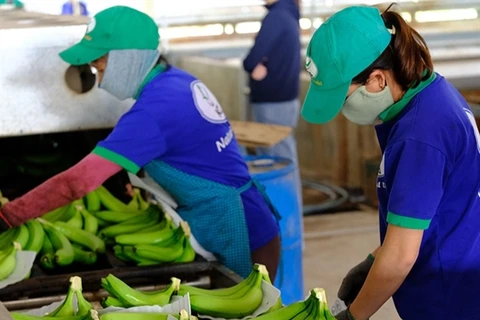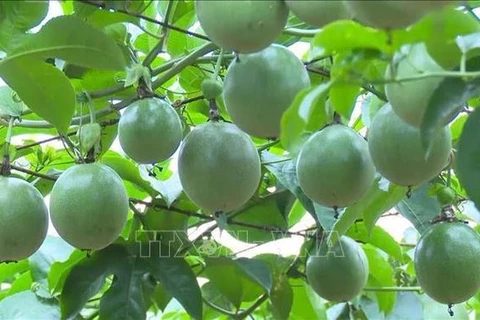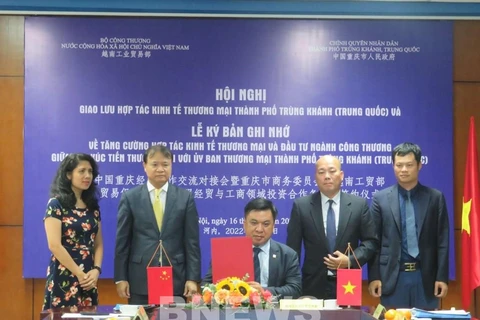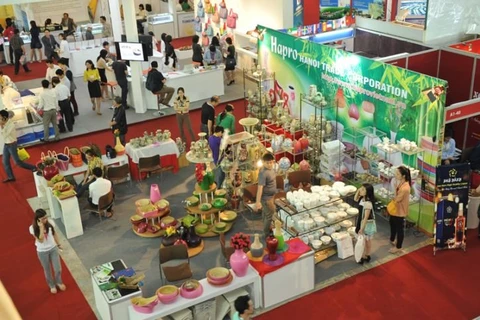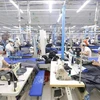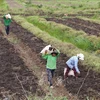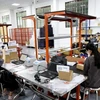Beijing (VNA) – The Vietnam Trade Office in Beijing, its chapters and trade promotion offices in other Chinese localities have worked hard to support Vietnamese businesses to access and fully exploit the Chinese market in various forms, towards further promoting exports to the country, said Commercial Counselor at the Vietnamese Embassy in China Nong Duc Lai.
In a recent interview granted to the Vietnam News Agency (VNA)’s resident correspondent in China, Lai said Vietnamese businesses have been updated on information about the Chinese market and policies and regulations of China in managing import and export of goods.
They have been also assisted in joining fairs, and other trade promotion and business connection events between the two sides, he added.
Before the outbreak of the COVID-19 pandemic, the office regularly organised Vietnamese business delegations to China to explore the market, seek partners and attend China's major international fairs such as China International Small and Medium Enterprises Fair (CISMEF), China-ASEAN Expo (CAEXPO), China International Import Expo (CIIE), and China-South Asia Exposition and China Kunming Import and Export Fair.
Since the pandemic broke out, Vietnamese firms have been supported to participate in fairs online in combination with directly exhibited products through their import agents in China, and introduce goods on e-commerce platforms, Lai said.
The office have made every effort to protect the interests of enterprises doing business in China on the basis of the host country’s legal regulations, Lai affirmed.
In the coming time, Lai said the office will coordinate with units of the Ministry of Industry and Trade, Vietnamese localities and business associations to organise events to introduce fruits and farm produce in general and food and processed agricultural products of Vietnam in some Chinese localities; and programmes to connect Vietnamese firms and Chinese importers.
According to the official, China is the second largest export market of Vietnamese products. Vietnam can tap its advantages of diverse transport modes from road, sea, rail to air with the short time and competitive costs compared to many other countries in the region and the world, to promote exports to China.
In the coming time, Chine may relax its “zero-COVID” policy along with a strong recovery of the consumer market at the year-end, Lai said, noting that this is also an opportunity for Vietnam to boost exports to this market./.
In a recent interview granted to the Vietnam News Agency (VNA)’s resident correspondent in China, Lai said Vietnamese businesses have been updated on information about the Chinese market and policies and regulations of China in managing import and export of goods.
They have been also assisted in joining fairs, and other trade promotion and business connection events between the two sides, he added.
Before the outbreak of the COVID-19 pandemic, the office regularly organised Vietnamese business delegations to China to explore the market, seek partners and attend China's major international fairs such as China International Small and Medium Enterprises Fair (CISMEF), China-ASEAN Expo (CAEXPO), China International Import Expo (CIIE), and China-South Asia Exposition and China Kunming Import and Export Fair.
Since the pandemic broke out, Vietnamese firms have been supported to participate in fairs online in combination with directly exhibited products through their import agents in China, and introduce goods on e-commerce platforms, Lai said.
The office have made every effort to protect the interests of enterprises doing business in China on the basis of the host country’s legal regulations, Lai affirmed.
In the coming time, Lai said the office will coordinate with units of the Ministry of Industry and Trade, Vietnamese localities and business associations to organise events to introduce fruits and farm produce in general and food and processed agricultural products of Vietnam in some Chinese localities; and programmes to connect Vietnamese firms and Chinese importers.
According to the official, China is the second largest export market of Vietnamese products. Vietnam can tap its advantages of diverse transport modes from road, sea, rail to air with the short time and competitive costs compared to many other countries in the region and the world, to promote exports to China.
In the coming time, Chine may relax its “zero-COVID” policy along with a strong recovery of the consumer market at the year-end, Lai said, noting that this is also an opportunity for Vietnam to boost exports to this market./.
VNA

